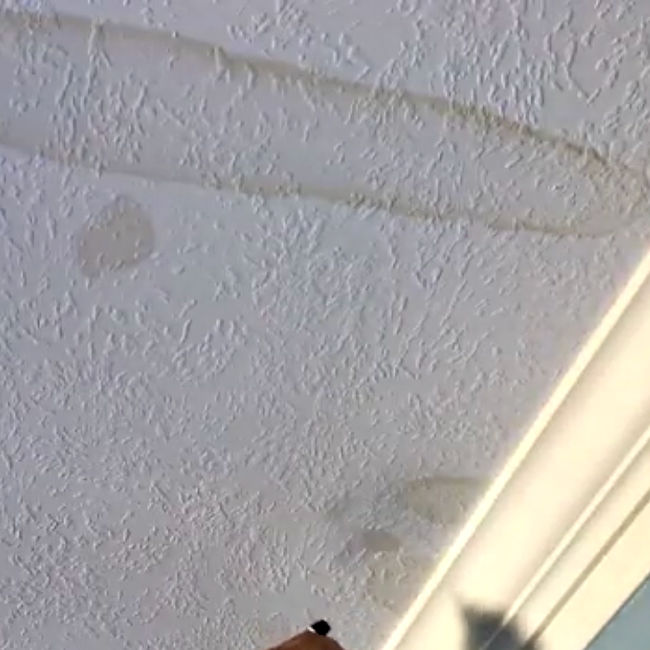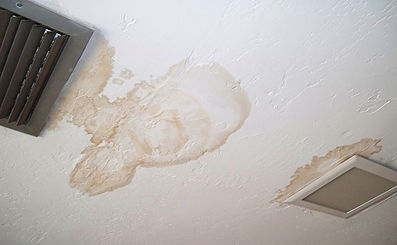Everyone maintains their unique conception in relation to Water Stains on Walls.

Water discolorations on walls are not positive to the eyes. Your residence must be without stains on the walls, roof covering, or floors. That is the perfect state of a residence and also its structures. Sometimes it appears nearly unavoidable to experience water discolorations on wall surfaces in houses.
Homeowners residing in humid areas regularly handle the anxiety of water spots on walls. That doesn't have to be the situation for you. With precise and all-around information on the sources of water spots and punctual repair service processes, you will certainly constantly be an action ahead of such events. This write-up guarantees to be an useful overview for you.
3 Common Reasons For Water Discolorations on Walls
As opposed to common belief, water stains on walls do not constantly stem from poor structure products. There are several reasons for water discolorations on wall surfaces. These include:
Poor Drain
When making a structure strategy, it is essential to make sure ample drainage. This will stop water from permeating into the walls. Where the drain system is obstructed or missing, underground moisture develops. This web links to too much wetness that you discover on the walls of your structure.
So, the leading cause of wet walls, in this case, can be a bad drain system. It can also be because of bad monitoring of sewage pipes that go through the structure.
Damp
When hot damp air meets completely dry cold air, it causes water droplets to base on the wall surfaces of structures. This occurs in kitchens and bathrooms when there is steam from cooking or showers. The water droplets can discolor the bordering walls in these parts of your residence and also infect various other locations.
Wet or condensation affects the roof and walls of buildings. This causes them to appear darker than other areas of the house. When the wall is wet, it creates a suitable environment for the growth of microbes and fungi. These might have damaging impacts on health and wellness, such as allergies and respiratory system problems.
Pipe Leaks
Most residences have a network of pipes within the walls. This ensures that the pipelines are well away from the reach of destructive rats. It constantly enhances the feasibility of such pipes, as there is little oxygen within the walls. This discourages corrosion.
Yet, a disadvantage to this is that water leak impacts the walls of the structure as well as causes widespread damages. An indicator of malfunctioning pipes is the appearance of a water tarnish on the wall.
Water Stains on Wall Surface: Repair Work Tips
When dealing with water spots, homeowners would usually want a fast repair. They would quickly realize this is detrimental as the water discolorations repeat. So, below are a few practical tips that will certainly lead you in the repair work of water discolorations on walls:
Pro Pointer
A houseplant in your home likewise raises its humidity. So, if your home is currently humid, you may intend to introduce houseplants with minimal transpiration. An example of appropriate houseplants is succulents.
Verdict
No one desires to have water discolorations on walls in their house, it can occur to the ideal of us. This article gives you take advantage of, as you currently recognize just how to handle this accident if it does happen.
It is constantly best to hire specialist solutions to help repair the damages in your house.
Occasionally it appears virtually unpreventable to experience water discolorations on wall surfaces in residences.
In contrast to prominent idea, water spots on walls do not always stem from poor building materials. There are a number of reasons of water discolorations on wall surfaces. The water beads can tarnish the bordering wall surfaces in these components of your residence and spread to other areas.
Here are a few helpful tips that will guide you in the repair of water stains on walls:
CHECKING FOR WATER DAMAGE
Water damage can be costly, and it may begin before you even notice the first signs of trouble. Water damage can cause mold and mildew in your walls and floors, which can create an abundance of health concerns for your family. It can also lead to costly repairs of various appliances and general home fixtures. To avoid the pricey consequences of water damage, here are Warner Service’s top 5 places you should check:
The walls – The easiest place to spot the beginnings of water damage is on the walls and ceilings of your home. If water damage is present, there will most likely be water stains, especially around the windows and doorframes, and/or cracks in the drywall. If a stain looks unusual (discolored to brown, black or gray, raised texture), has a swollen appearance or is soft to the touch, contact a professional immediately. The pipes – To avoid water damage, consistently check the pipes in your kitchen (especially the dishwasher and ice maker), bathrooms, laundry room (specifically washing machines) and basement for corrosion, leaks and water stains. Pay special attention to where the pipes connect in your home and the location of caulking around the bathroom fixtures, including toilets, sinks, showers and tubs. Missing or loose caulking and grout could be signs of leaking water. This seepage can also quickly cause mold and rust, so double check your water heater and tank for wet spots on the floor. The floor – Water damage is very easy to spot on the floor. Look for any warping or buckling of the material, especially in the basement. If your home has wood flooring, look for bright white or dark stains. If your home has carpeting, keep it dry and clean. A damp carpet that smells of mold could cause water damage and health problems. To avoid this, consider installing floor pans under your appliances to help prevent damages from small, slow and undetected leaks. The basement and attic – If your basement or attic smells odd check for mold and mildew around the area, especially the valley where the roof meets. While you are inspecting those areas, check for wall cracks, floor stains, rust and dampness in the insulation. If you live in a colder and/or rainier climate, perform routine checks for water damage from melting snow or ice and rain. The exterior – Check the roof for damaged flashing and missing, cracked or curled shingles. There should also be no standing water anywhere outside your home. This could be caused by puddles, leaky rain gutters or hoses, poor drainage, or short gutter spouts. Invest in a sump pump system or water flow monitoring system, and perform routine maintenance on these outdoor appliances to avoid indoor water damage.

I discovered that write up about Water Stains on Walls while doing a search on the web. In case you appreciated our article if you please remember to share it. I value reading our article about How to Find and Repair Water Leaking in the Wall.
Book Your Installation